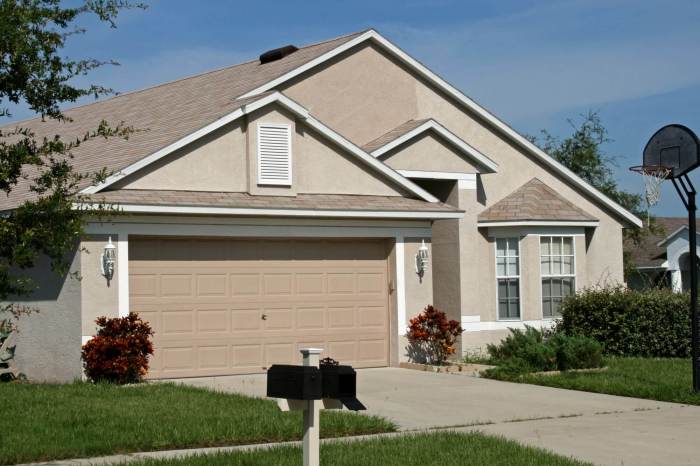Homeownership is a significant milestone, but the associated costs extend beyond the mortgage. Understanding your homeowner insurance premium is crucial for responsible financial planning. This guide delves into the multifaceted factors influencing your premium, empowering you to make informed decisions and potentially save money.
From the intricacies of coverage options and the impact of your credit score to effective strategies for securing the best rates and managing your deductible, we’ll unravel the complexities of homeowner insurance premiums. We’ll explore how seemingly small details, such as home improvements and preventative maintenance, can significantly influence your annual cost.
Factors Influencing Homeowner Insurance Premiums

Understanding the factors that determine your homeowner’s insurance premium is crucial for securing the best possible coverage at a competitive price. Several key elements contribute to the final cost, and it’s helpful to understand their individual impact. This allows you to make informed decisions about your coverage and potentially lower your premiums.
Insurance companies employ a complex formula to calculate premiums, considering a multitude of factors. These factors are carefully weighed to assess the risk associated with insuring your property. A higher perceived risk translates to a higher premium, while a lower risk usually leads to a lower premium.
Coverage Amounts
The amount of coverage you choose significantly influences your premium. Higher coverage amounts mean greater financial protection in case of damage or loss, but they also result in higher premiums. This is a direct correlation: more coverage requested means a higher potential payout for the insurance company, hence a higher premium to offset that risk. For example, opting for a higher coverage limit on your dwelling, personal property, or liability will increase your premium, while choosing lower coverage limits will result in lower premiums, but also less protection. It’s essential to find a balance between adequate protection and affordable premiums.
Location
Your home’s location plays a substantial role in determining your premium. Areas prone to natural disasters, such as hurricanes, earthquakes, wildfires, or floods, command higher premiums due to the increased risk of claims. Furthermore, areas with high crime rates or a history of property damage also influence premiums. For instance, a home in a hurricane-prone coastal region will likely have a much higher premium than a similar home located inland in a less disaster-prone area. Similarly, a home in a high-crime neighborhood might face higher premiums due to the increased risk of theft or vandalism.
Home Features
The characteristics of your home itself are key factors in premium calculation. Features like the age of your home, the type of construction materials used, the presence of security systems (alarms, fire sprinklers), and the quality of your roof all impact your premium. Newer homes constructed with modern, fire-resistant materials generally receive lower premiums than older homes with outdated systems. Conversely, homes equipped with advanced security systems often qualify for discounts. For example, a home with a newer roof made of fire-resistant materials will likely receive a lower premium compared to a home with an older, damaged roof.
Claims History
Your past claims history is a significant factor. Filing multiple claims in a short period can lead to higher premiums, as it signals a higher risk to the insurance company. Conversely, a clean claims history often results in lower premiums and even potential discounts. Insurance companies view a history of claims as an indicator of potential future claims, leading them to increase premiums to offset this perceived risk. For instance, someone with a history of filing claims for water damage might see a substantial increase in their premium compared to someone with no such claims.
Credit Score
In many states, your credit score is a factor in determining your homeowner’s insurance premium. A higher credit score generally correlates with lower premiums, while a lower credit score may result in higher premiums. The reasoning behind this is that individuals with better credit scores are statistically considered less risky to insure. However, it’s important to note that the use of credit scores in insurance varies by state and insurer. For example, an individual with an excellent credit score might receive a discount on their premium, whereas someone with a poor credit score may face a higher premium.
Dwelling Type Impact on Premiums
| Dwelling Type | Impact on Premium | Reason for Impact | Example |
|---|---|---|---|
| Single-Family Home | Varies widely | Dependent on size, age, location, and features | A large, older home in a high-risk area will have a higher premium than a smaller, newer home in a low-risk area. |
| Condominium | Generally lower | Shared responsibility for exterior maintenance and repairs | The homeowner’s association typically handles exterior maintenance, reducing the insurer’s risk. |
| Townhouse | Moderately lower than single-family homes | Shared walls and some exterior maintenance | Similar to condominiums, but with potentially more individual responsibility for maintenance than a condo. |
Impact of Home Improvements and Maintenance on Premiums

Your homeowner’s insurance premium isn’t just about the value of your house; it’s also a reflection of the risk your insurer assesses. By making smart improvements and diligently maintaining your property, you can significantly influence this risk profile and potentially lower your premiums. This section explores how proactive homeownership translates into cost savings on your insurance.
Home improvements and regular maintenance play a crucial role in mitigating potential risks associated with your property. By investing in safety features and consistently addressing maintenance needs, you actively reduce the likelihood of filing claims, a key factor in determining your insurance rates. This preventative approach not only safeguards your property but also contributes to significant long-term cost savings.
Home Improvements Leading to Lower Premiums
Many home improvements directly reduce the risk of damage or theft, making your property a less attractive target for insurance claims. These improvements often result in lower premiums because insurers recognize the reduced risk.
- Security Systems: Installing a monitored security system, including features like burglar alarms, motion detectors, and fire alarms, significantly lowers the risk of burglary and fire damage. Insurers often offer discounts for homes equipped with these systems, sometimes up to 20% or more, depending on the system’s features and monitoring service.
- Fire-Resistant Roofing Materials: Replacing a standard asphalt shingle roof with a fire-resistant option, such as tile or Class A rated composite shingles, can drastically reduce the risk of fire damage. This demonstrable reduction in risk translates to lower premiums. The cost savings over time may outweigh the initial investment in the roofing upgrade.
- Impact-Resistant Windows and Doors: Upgrading to impact-resistant windows and doors protects your home from severe weather damage like hurricanes and hailstorms. These upgrades can result in substantial premium reductions in areas prone to such events, as they minimize the likelihood of costly repairs or replacements.
The Importance of Proper Home Maintenance in Reducing Premiums
Consistent and thorough home maintenance is essential for preventing costly repairs and claims. Neglecting maintenance can lead to small problems escalating into significant damage, increasing the risk of claims and driving up premiums.
Regular maintenance reduces the likelihood of issues like water damage from leaky roofs or pipes, foundation problems, and electrical hazards. These types of damage are common and expensive to repair, resulting in increased insurance claims and, consequently, higher premiums.
Preventative Measures and Their Influence on Insurance Costs
Regular inspections by qualified professionals are a proactive approach to home maintenance that significantly impacts insurance costs. These inspections identify potential problems early, allowing for timely and cost-effective repairs before they escalate into major issues requiring expensive insurance claims.
For example, a yearly inspection might reveal minor roof damage that can be repaired for a few hundred dollars, preventing a much larger and more costly repair—or even roof replacement—later. This proactive approach demonstrates responsible homeownership and reduces the overall risk profile, potentially leading to lower premiums or even eligibility for discounts from your insurer. Furthermore, maintaining detailed records of inspections and repairs provides evidence of your commitment to preventative maintenance, which can be beneficial when discussing premium rates with your insurer.
Closure

Navigating the world of homeowner insurance premiums can feel daunting, but with a clear understanding of the factors at play, you can confidently secure the best coverage at a price that aligns with your budget. By proactively managing your risk profile and actively shopping for insurance, you can significantly reduce your premium over time. Remember, informed decisions lead to greater financial security.
Common Queries
What is the difference between actual cash value (ACV) and replacement cost coverage for personal property?
ACV coverage pays for the depreciated value of your belongings, while replacement cost coverage pays for the cost of replacing them with new items, regardless of age.
How often can I expect my homeowner insurance premium to change?
Premiums can adjust annually, reflecting changes in your risk profile, market conditions, and the insurer’s claims experience.
Can I bundle my homeowner’s insurance with other policies to save money?
Yes, many insurers offer discounts for bundling home and auto insurance, sometimes even adding other policies like umbrella coverage.
What happens if I make a claim and my premium increases?
Most insurers consider claims history when setting premiums. A claim might lead to a premium increase, but the extent depends on the claim’s severity and your overall claims history.